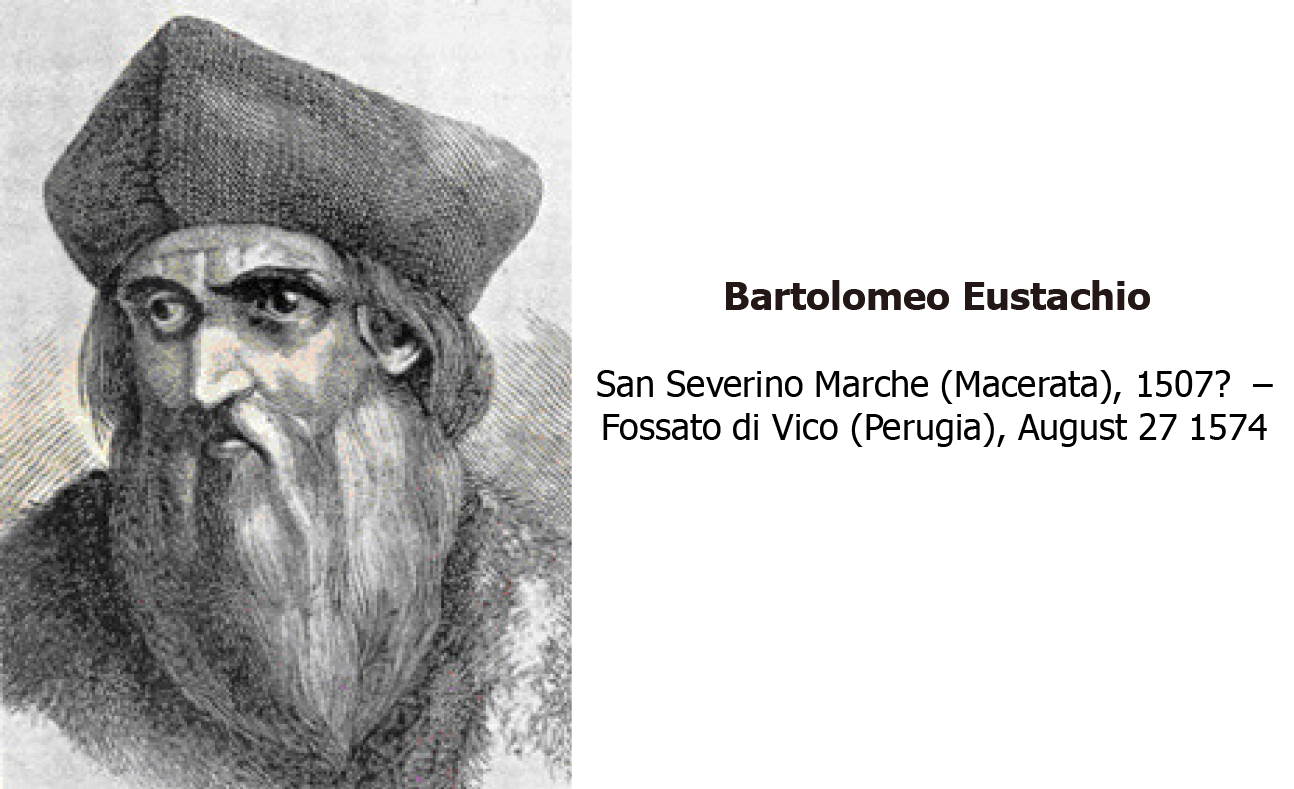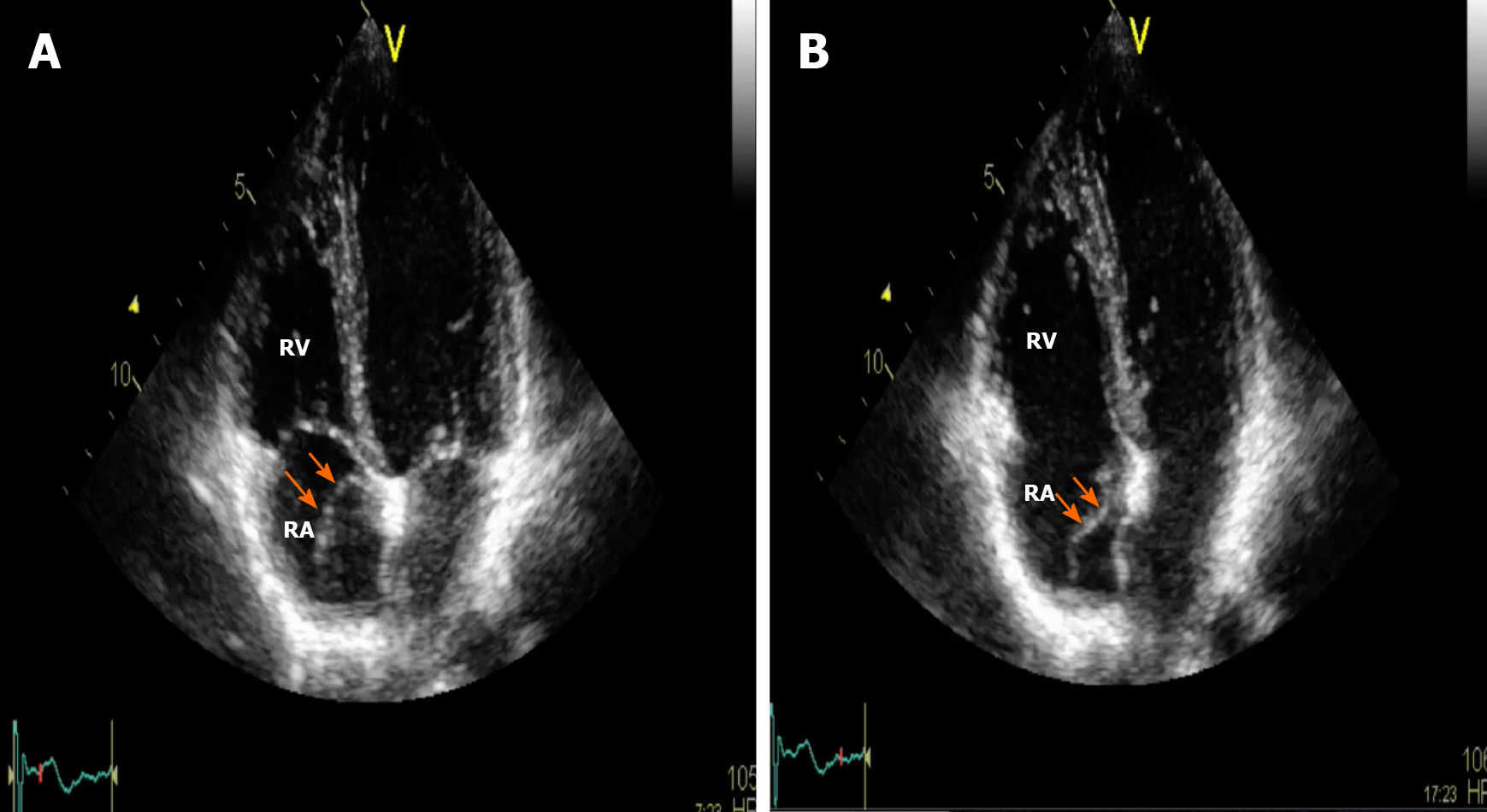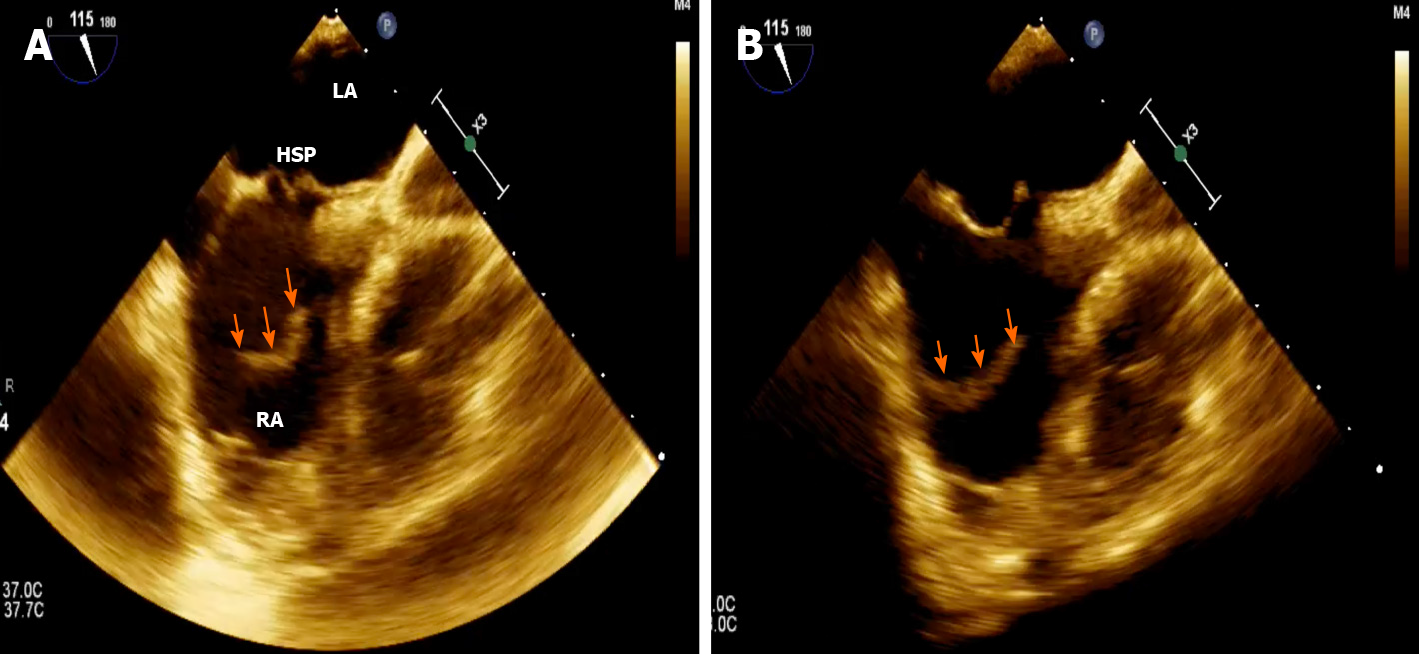Copyright
©The Author(s) 2021.
World J Cardiol. Jul 26, 2021; 13(7): 204-210
Published online Jul 26, 2021. doi: 10.4330/wjc.v13.i7.204
Published online Jul 26, 2021. doi: 10.4330/wjc.v13.i7.204
Figure 1 Bartolomeo Eustachio, also known by his latin name of Eustachius, was a distinguished physician of the Renaissance period, professor of anatomy at the medical faculty of Collegio della Sapienza in Rome and one of the founders of the science of modern human anatomy.
Figure 2 Anatomical illustration (A) and two-dimensional transesophageal echocardiogram in sagittal (B) and in bicaval (C) views showing the specific orientation of the eustachian valve directing the blood (white dotted arrow) toward the interatrial septum and patent foramen ovale (orange arrow).
SVC: Superior vena cava; IVC: Inferior vena cava; RA: Right atrium; LA: Left atrium; EV: Eustachian valve; Ao: Aorta; PFO: Patent foramen ovale.
Figure 3 Two-dimensional transthoracic echocardiogram in apical four-chamber views showing the eustachian valve as a mobile, elongated structure (orange arrows) projecting into the right atrial cavity, showing an undulating motion during cardiac cycles.
A: Systole; B: Diastole. RA: Right atrium; RV, right ventricle.
Figure 4 Two-dimensional transesophageal echocardiogram bicaval views.
A: systolic frame; B: diastolic frame showing a prominent elongated eustachian valve (orange arrows) without any anatomic connection pointing towards the hypermobile septum primum. RA: Right atrium; LA: Left atrium; HSP: hypermobile septum primum.
- Citation: Onorato EM. Large eustachian valve fostering paradoxical thromboembolism: passive bystander or serial partner in crime? . World J Cardiol 2021; 13(7): 204-210
- URL: https://www.wjgnet.com/1949-8462/full/v13/i7/204.htm
- DOI: https://dx.doi.org/10.4330/wjc.v13.i7.204












